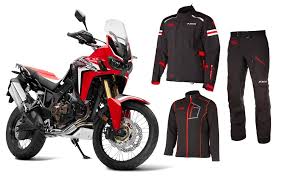Enhancing Rider Safety: The Forcite Smart Helmet Revolution
The Future of Motorcycle Safety: Forcite Smart Helmet
In the fast-paced world of technology, innovation continues to revolutionize various industries, and motorcycle safety is no exception. Introducing the Forcite Smart Helmet – a cutting-edge piece of gear that is set to redefine the way riders experience safety on the road.
The Forcite Smart Helmet is not just your ordinary headgear; it’s a sophisticated piece of technology designed to enhance rider safety and overall riding experience. Equipped with a range of advanced features, this helmet combines style, comfort, and state-of-the-art technology to provide riders with unparalleled protection.
One of the standout features of the Forcite Smart Helmet is its integrated heads-up display (HUD) system. This innovative technology projects essential information directly onto the rider’s visor, allowing for quick and easy access to critical data such as speed, navigation instructions, and even incoming calls or messages.
But that’s not all – the Forcite Smart Helmet also comes equipped with built-in cameras that capture high-definition footage of your rides. Whether you want to document your journey or enhance your safety by recording potential incidents on the road, these cameras offer added peace of mind for riders.
Furthermore, this smart helmet features intelligent communication capabilities, enabling seamless connectivity with your smartphone or other devices. Stay connected while on the go without compromising your safety – receive notifications, make calls, or listen to music without taking your hands off the handlebars.
When it comes to safety, the Forcite Smart Helmet leaves no stone unturned. With advanced impact protection systems and real-time monitoring sensors, this helmet prioritizes rider safety above all else. In the event of an accident or impact, these features work together to provide immediate assistance and ensure that help is on its way.
As we look towards a future where technology plays an increasingly significant role in our lives, the Forcite Smart Helmet stands out as a beacon of innovation in motorcycle safety. With its blend of cutting-edge features and uncompromising commitment to rider protection, this smart helmet is set to lead the way towards a safer and more connected riding experience for motorcyclists everywhere.
9 Essential Tips for Maximising the Use and Longevity of Your Forcite Smart Helmet
- Always ensure the helmet is properly fitted to your head for maximum safety and comfort.
- Regularly check the battery level of the smart features to avoid unexpected shutdowns.
- Familiarise yourself with all the functions and controls of the smart helmet before using it on the road.
- Keep the helmet clean and well-maintained to prolong its lifespan and effectiveness.
- Be mindful of local regulations regarding the use of smart helmets while riding.
- Adjust the settings such as volume and sensitivity according to your preferences for a personalised experience.
- Take breaks during long rides to prevent discomfort or fatigue from wearing the helmet for extended periods.
- Ensure that any software or firmware updates recommended by the manufacturer are promptly installed for optimal performance.
- Store the smart helmet in a cool, dry place away from direct sunlight when not in use.
Always ensure the helmet is properly fitted to your head for maximum safety and comfort.
Ensuring that your Forcite Smart Helmet is properly fitted to your head is crucial for both safety and comfort while riding. A well-fitted helmet not only provides maximum protection in the event of an accident but also ensures that you can focus on the road ahead without any distractions. By taking the time to adjust the straps and padding to fit snugly and securely, you can enjoy a safer and more comfortable riding experience, knowing that your helmet is optimally positioned to protect you in any situation.
Regularly check the battery level of the smart features to avoid unexpected shutdowns.
To ensure a seamless and uninterrupted riding experience with your Forcite Smart Helmet, it is crucial to regularly monitor the battery level of its smart features. By checking the battery status consistently, riders can avoid unexpected shutdowns of essential functions and maintain optimal performance while on the road. This simple yet important tip not only enhances the reliability of the helmet’s smart capabilities but also contributes to overall safety and convenience during every ride.
Familiarise yourself with all the functions and controls of the smart helmet before using it on the road.
It is crucial to familiarise yourself with all the functions and controls of the Forcite Smart Helmet before embarking on your journey on the road. Understanding how to operate the smart helmet effectively ensures that you can make full use of its advanced features without distractions or confusion while riding. By taking the time to learn about its capabilities beforehand, you can enhance your overall riding experience and prioritise safety on every trip.
Keep the helmet clean and well-maintained to prolong its lifespan and effectiveness.
To ensure the longevity and effectiveness of your Forcite Smart Helmet, it is essential to keep it clean and well-maintained. Regular cleaning not only helps maintain the helmet’s appearance but also plays a crucial role in preserving its functionality and safety features. By keeping your helmet free from dirt, grime, and debris, you can prolong its lifespan and ensure that it continues to provide optimal protection while you ride. Regular maintenance checks, such as inspecting the helmet for any signs of wear or damage, are also important in ensuring that your Forcite Smart Helmet remains in top condition for years to come.
Be mindful of local regulations regarding the use of smart helmets while riding.
It is important to be mindful of local regulations concerning the use of smart helmets while riding. While the Forcite Smart Helmet offers a range of innovative features designed to enhance safety and connectivity for riders, it’s crucial to ensure that its functionalities comply with the laws and regulations in your area. By staying informed and adhering to local guidelines, riders can enjoy the benefits of smart helmet technology while riding responsibly and in accordance with legal requirements.
Adjust the settings such as volume and sensitivity according to your preferences for a personalised experience.
To enhance your riding experience with the Forcite Smart Helmet, it is recommended to adjust the settings, such as volume and sensitivity, to align with your preferences. By customizing these features to suit your individual needs, you can create a personalised experience that maximizes comfort and convenience during your journeys on the road. Whether you prefer a higher volume level for clearer audio or a specific sensitivity setting for optimal performance, tailoring these aspects of the smart helmet to your liking ensures that you can fully enjoy all the benefits it has to offer.
Take breaks during long rides to prevent discomfort or fatigue from wearing the helmet for extended periods.
Forcite Smart Helmet users are encouraged to take breaks during long rides to avoid discomfort or fatigue associated with wearing the helmet for extended periods. Regular breaks not only provide relief from prolonged helmet use but also help maintain focus and alertness while on the road. By taking short intervals to rest and stretch, riders can ensure their comfort and well-being throughout their journey, enhancing the overall riding experience with the Forcite Smart Helmet.
Ensure that any software or firmware updates recommended by the manufacturer are promptly installed for optimal performance.
To ensure that your Forcite Smart Helmet operates at its best, it is crucial to promptly install any software or firmware updates recommended by the manufacturer. These updates are designed to enhance performance, address any potential issues, and introduce new features that can improve your overall riding experience. By staying up-to-date with the latest updates, you can ensure that your smart helmet remains secure, reliable, and fully optimized for safety and functionality on the road.
Store the smart helmet in a cool, dry place away from direct sunlight when not in use.
To ensure the longevity and performance of your Forcite Smart Helmet, it is advisable to store the helmet in a cool, dry location away from direct sunlight when not in use. By following this simple tip, you can protect the helmet’s components from potential damage caused by excessive heat or prolonged exposure to sunlight. Proper storage conditions will help maintain the integrity of the smart helmet and ensure that it remains in optimal condition for your next ride.








